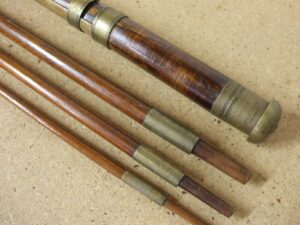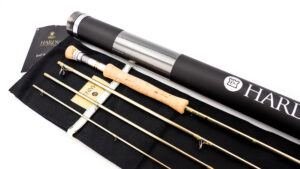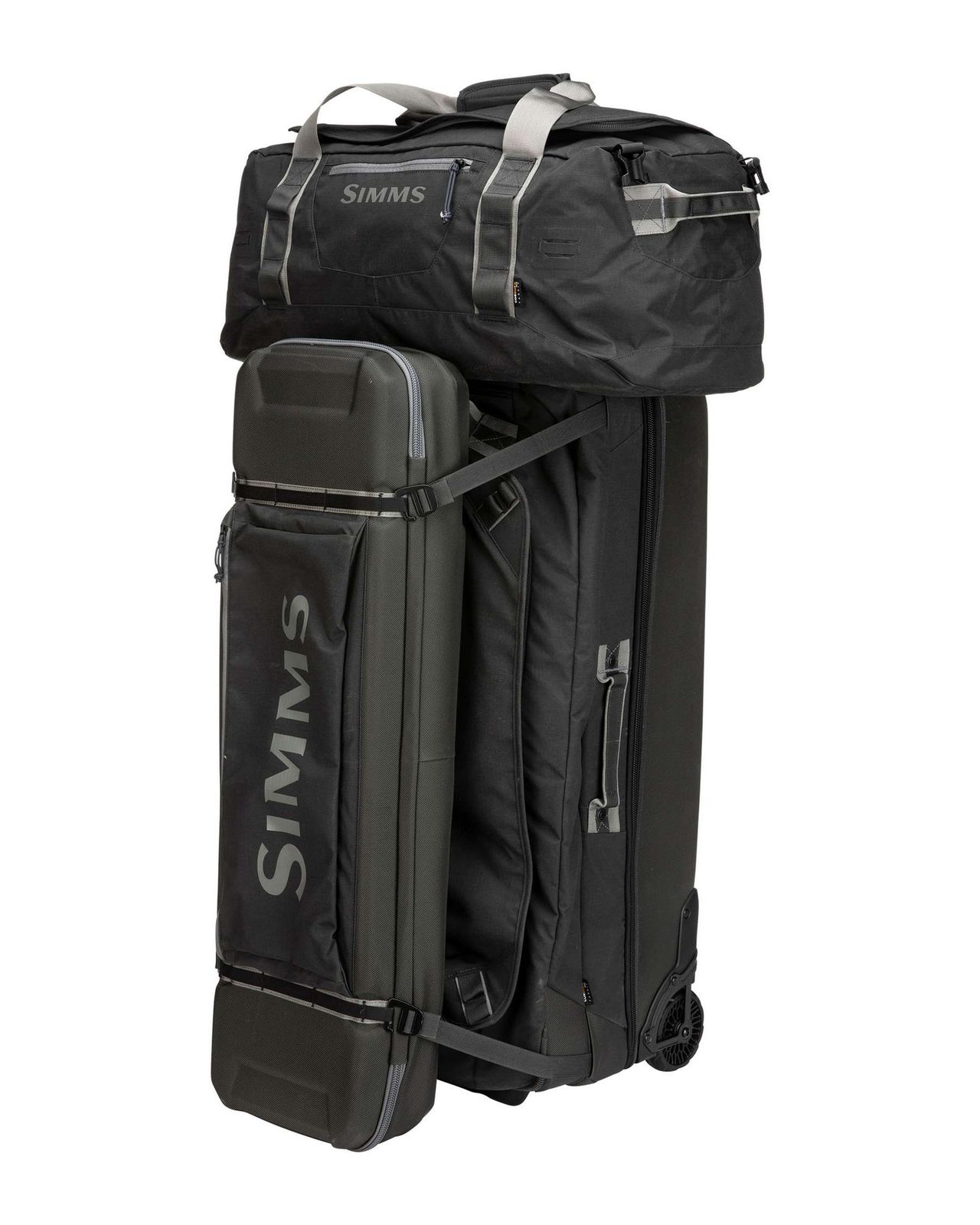The evolution of fishing rod materials is a fascinating journey through history, reflecting advancements in technology and changing angler preferences. Here’s an exploration of this evolution, from the early days of greenheart wood to the modern era of carbon fiber blanks.
The Dawn of Angling: Greenheart Wood Rods (19th Century)
In the early days of fishing, rods were primarily made from wood (Greenheart) a dense and durable wood from British Guiana, being a popular choice. Greenheart wood was often used in wetland industrial structures at that time as the material had natural resistant to wrot, like wooden harbours and piers These rods were prized for their toughness and ability to withstand the rigors of fishing. However, they were often heavy and lacked the flexibility desired by many anglers.
Key Features: Dense, durable, heavy
Fishing Experience: More strength-oriented, less on finesse
The Evolution: Split Cane Rods (Late 19th to Mid 20th Century)
As fishing evolved, so did the materials used in rod construction. Enter split cane rods, crafted from bamboo, particularly favored for its natural flexibility and strength. These rods were made by gluing together strips of bamboo (usually six) to form a hexagonal cross-section, offering a great balance between strength and flexibility.
Key Features: Flexible, lighter than greenheart, hexagonal cross-section
Fishing Experience: Greater sensitivity and casting accuracy
The Revolution: Fiberglass and Carbon Fiber Blanks (Mid 20th Century)
The mid-20th century saw the introduction of fiberglass rods. These rods marked a significant leap in rod technology, being lighter and more flexible than their wooden and bamboo predecessors. Fiberglass rods were also more affordable and durable, making them accessible to a wider range of anglers.
Key Features: Affordable, durable, more flexible than bamboo
Fishing Experience: Improved casting distance and accuracy
Carbon Fiber Era (Late 20th Century to Present)
The latest advancement in rod technology is the use of carbon fiber (often referred to as graphite). Carbon fiber rods are incredibly lightweight and offer superior strength and flexibility compared to all previous materials. These rods allow for precision casting, greater sensitivity, and are the go-to choice for serious anglers.
Key Features: Extremely lightweight, strong, high sensitivity
Fishing Experience: Precision casting, enhanced sensitivity for detecting bites
Conclusion: The Constant Pursuit of the Perfect Cast
The history of fishing rod materials is a testament to the constant pursuit of the perfect cast. Each material, from greenheart wood to modern carbon fiber, has played a pivotal role in the evolution of angling. Today’s anglers benefit from centuries of innovation, enjoying a level of performance and comfort that early fishermen could hardly have imagined.
This journey through the materials of Fly Fishing Rods not only mirrors technological advancements but also reflects the ever-changing relationship between anglers and their beloved pastime. As materials have evolved, so have the techniques and experiences of fishing, making it an ever-more refined and enjoyable sport.









